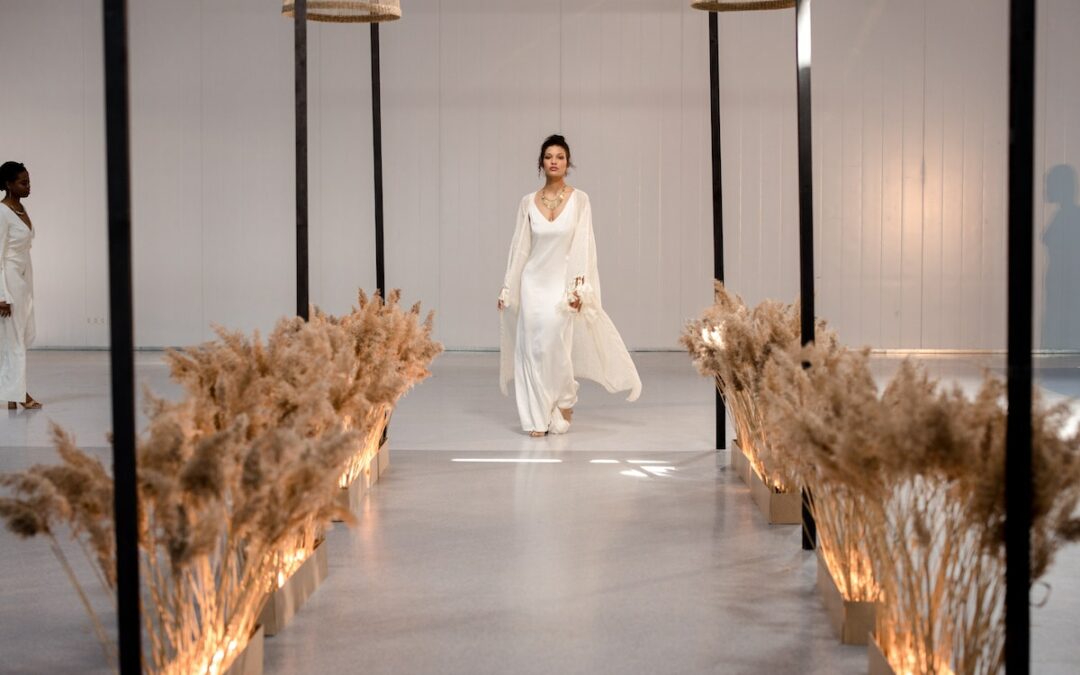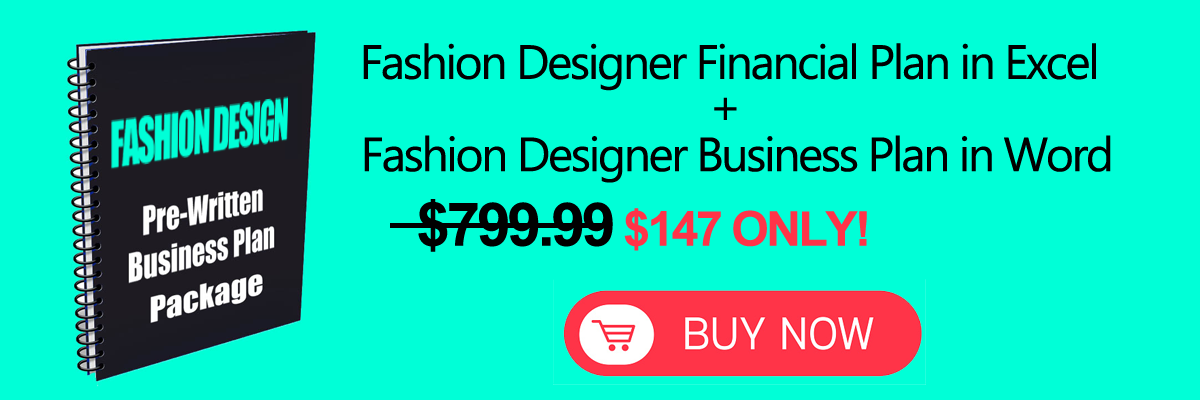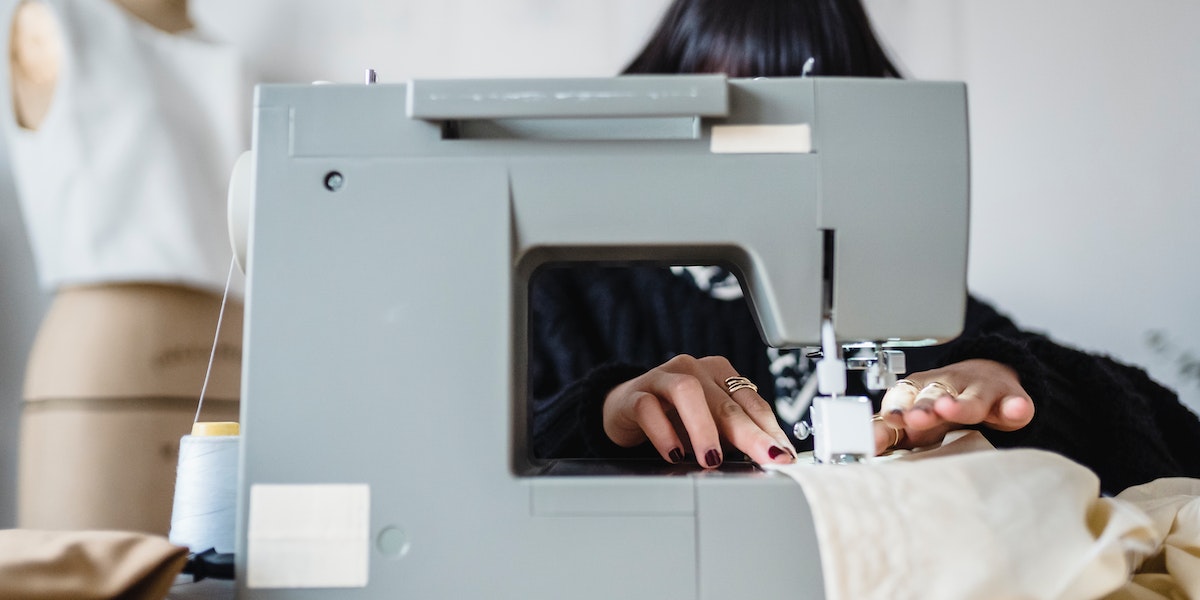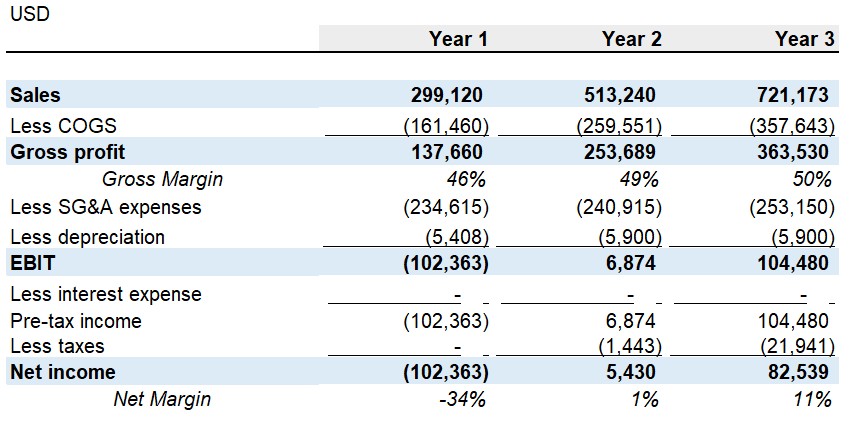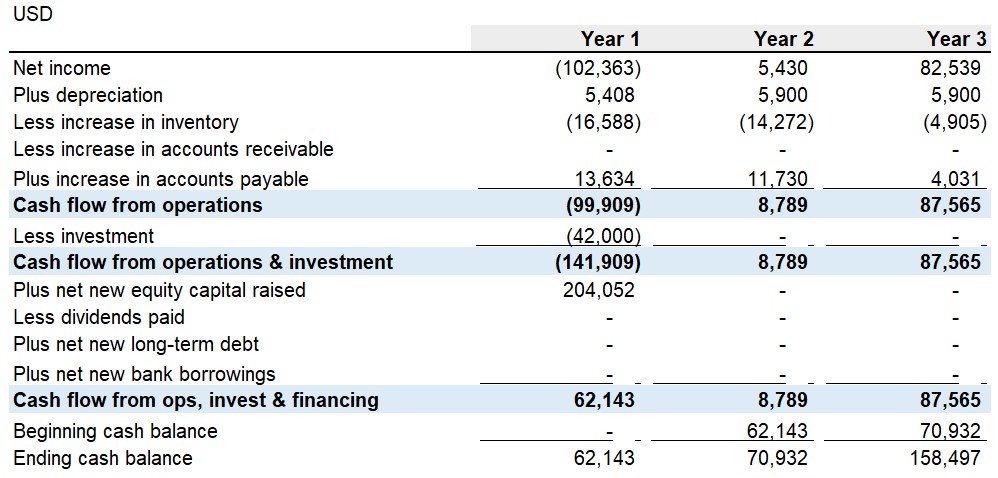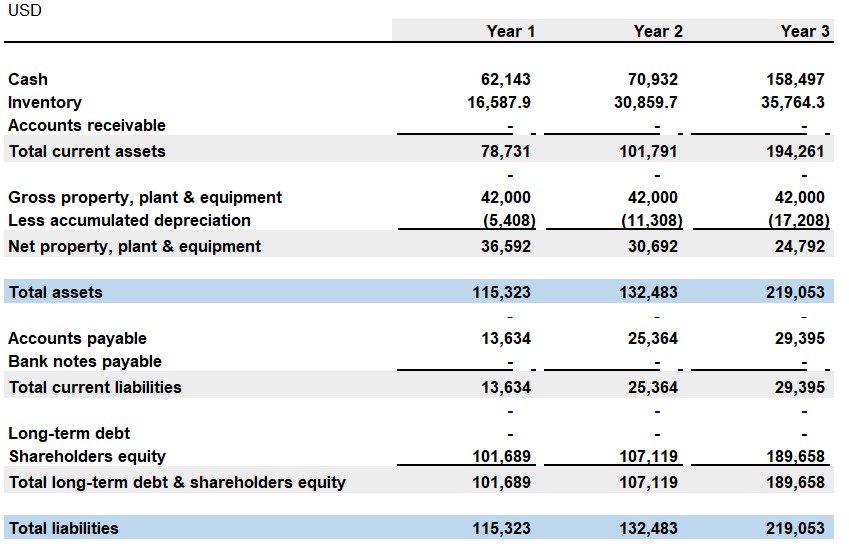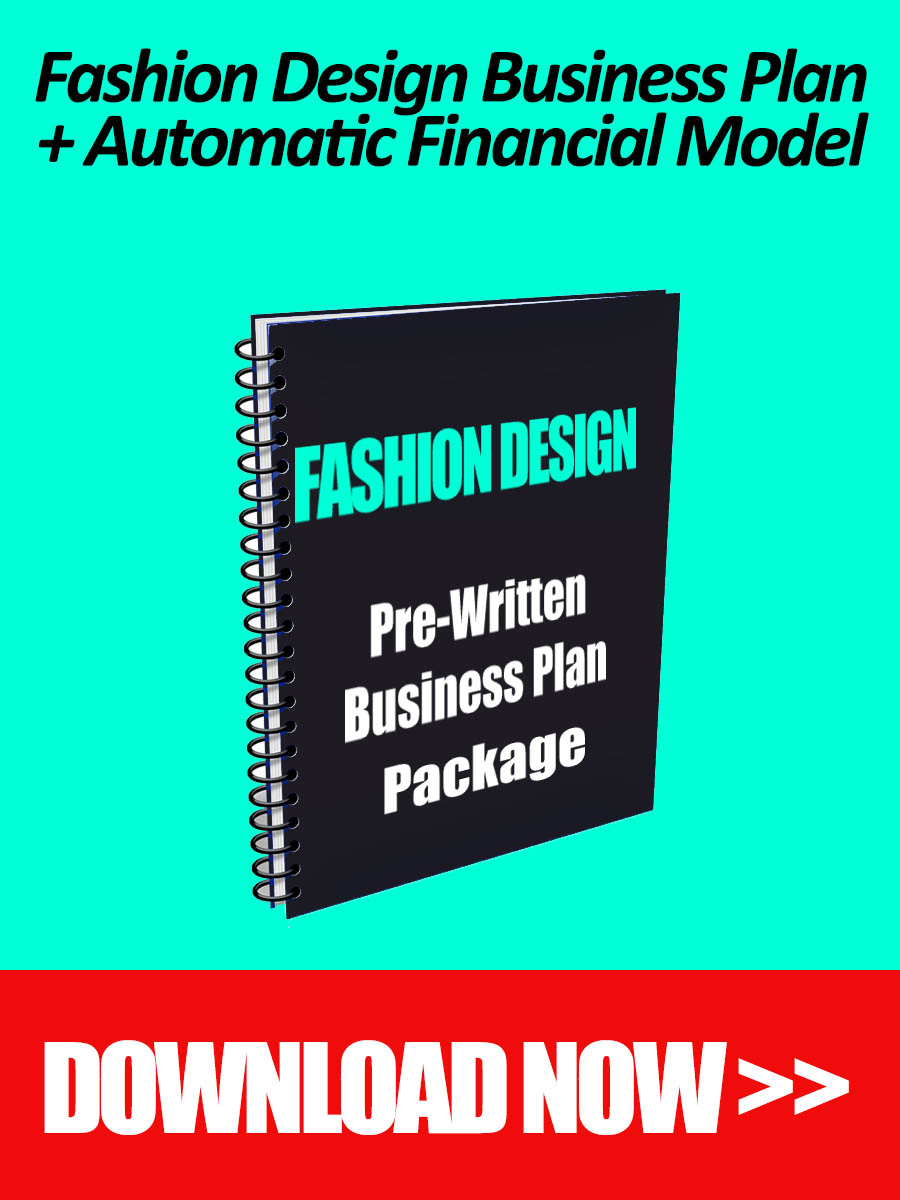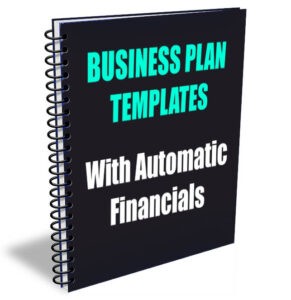Starting a fashion designer business or fashion label can be an exciting and rewarding venture, but it also requires a significant investment of time, energy, and money. One of the most important steps in launching and growing such a business is creating a comprehensive fashion design financial plan. This guide will walk you through the process of building detailed financials for your fashion label, including forecasting costs, revenues, and cash flows, as well as analyzing your break-even point and creating income statement and balance sheet forecasts. With a solid fashion design financial plan in place, you can make more informed decisions, stay on top of your finances, and position your fashion label for long-term success. Whether you’re just starting out or looking to take your fashion business to the next level, this guide will provide you useful information and tools you need to succeed.
Fashion Design Financial Plan Template in Excel
We wish to introduce our ready-made and automatic fashion design financial spreadsheet in Excel before we dive in our detailed guide. By downloading our off the shelf fashion design financial model included in our fashion design business plan template, you can save tons of time and effort since we have already done most of the work for you. All you need to do is simply modify a few assumptions to generate detailed financial statements, tables and charts which you can use in your own business plan.
Fashion Design Business Cost forecast:
In a fashion design business the cost structure typically includes the following expenses:
- Materials and production costs: This includes the cost of fabrics, trims and any other materials used to create the clothing, as well as the cost of manufacturing the garments (salaries/fees of the tailors who produce your garments). These expenses are variable costs that depend on the volume of production. We also call them “Cost of Goods Sold” or COGS.
- Marketing and advertising expenses: These includes paying for advertising campaigns, promoting your fashion label on social media, public relations and other marketing efforts to build branding and awareness and attract customers.
- Distribution and logistics costs: This includes the cost of shipping and handling products to retailers and customers, as well as the cost of storing and maintaining inventory.
- General and administrative expenses: Such as rent, utilities and office supplies, as well as the cost of employees who are not directly involved in production or sales (accounting, secretary…etc.)
- Research and development: These include the cost of researching new trends, fabrics and design concepts. You can also factor in the cost of creating prototypes and samples.
Fashion Design Financial Plan: Capital Expenditure
In addition to the ongoing expenses listed above, a fashion label will also have capital expenditures (also known as “capex”). These are larger expenses that are made to acquire or improve long-term assets such as:
- Equipment: This includes sewing machines, cutting tables and other equipment needed for production.
- Properties: If the business purchases a store, a workshop or a warehouse this is accounted as a Capital Expenditure. If the asset requires remodeling, expansion or other improvements then this is also added to the CapEx investment.
- Technology: This can include software for inventory management, design or e-commerce, as well as hardware such as computers, servers and other tech infrastructure.
- Intellectual property: Registering trademarks or patents to protect the fashion designer’s brand are also considered as capital expenditures.
It’s important to consider the capital expenditures when creating a financial plan for a fashion design business, since these expenses can have a significant impact on cash flow and profitability.
Revenue forecast for a Fashion Design Business
Now that we have seen the main costs involved in a fashion design business, let’s discuss how to build a revenue forecast which is another important step in creating a financial plan. Here are some key considerations to keep in mind:
- Sales channels: Identify all the different channels through which your will sell your products, such as retail stores, e-commerce sites, wholesale and international distribution. Remember that each channel has its own characteristic when it comes to revenue. For example, when you sell directly via your own website, you earn the full selling price whereas if you sell via a distributor, you may need to share 40% or even 50% of the selling price with the distributor.
- Product mix: Understand the different types of products that your plan to sell, such as clothing, accessories and footwear, and how they will be priced. More on pricing in the next section.
- Seasonality: Consider how seasonal trends and holidays will affect your sales, as fashion products may have different demand throughout the year. For instance, expect to generate much higher sales during festive seasons like Christmas and the New Year when people naturally tend to spend more on shopping.
- Marketing and advertising: Take into account the impact of marketing and advertising efforts on sales, as well as any potential changes to the marketing budget.
- Historical data: It is wise to use historical sales data, if available, to inform revenue forecasts. Usually, the past is a good base to start your future assumptions.
- Market trends: Finally, keep an eye on the fashion market trends, monitor the change in consumer behavior and then adjust your forecast accordingly.
Your revenue forecast should ideally include a detailed breakdown of sales by product, channel and time period, and should be reviewed and updated regularly as the business evolves. It’s important to note that revenue forecasting is an art and a science, but even with the most accurate data, it’s impossible to predict the future with 100% accuracy.
We highly recommend you download our automatic fashion design financial plan template included in our ready-made fashion designer business plan pack, it has all you need to generate a solid revenue forecast within just a few clicks, in a fast and convenient manner. All you need to do is to modify a few assumptions and you’re done!
Fashion Designer Financial Plan: Pricing
Pricing is a critical aspect of any fashion designer business as it directly impacts revenues and profitability. When setting prices for your products, it is important to take a number of factors into consideration and these include production costs, competition, market demand and your target customer.
The following are common pricing methods you can use:
- Cost-plus pricing: This method involves determining the cost of producing each item, including materials, labor, and overhead, and then adding a markup (for example 30%) to arrive at the final price. This ensures that you are covering your costs and making a guaranteed profit, but it may not take into account market demand or competition.
- Value-based pricing: Here you are setting your price based on the perceived value of the product to the customer. This can include factors such as quality, design, brand reputation and exclusivity. This strategy can help to justify higher prices and can help to build a strong brand identity. Many luxury designer brands opt for this pricing strategy.
- Competitor-based pricing: This is based on researching the prices of similar products offered by your competitors and setting your prices accordingly. This method can help you to remain competitive in the market, but it may not take into account the unique value of your products or your target customer’s willingness to pay.
- Dynamic pricing: This strategy consists of adjusting your prices based on market demand and other factors. You can do this manually or through automated pricing software, and it can help you to optimize revenues by charging more for products that are in high demand and less for those that are not.
Ultimately, the best pricing strategy will depend on your specific business and market. It’s important to test different pricing strategies and monitor their impact on your revenues and profitability. Additionally, it’s important to regularly review and adjust your prices in response to changes in the market, competition and other factors.
Break-even analysis for a Fashion Design Business
What is a break-even analysis? In a nutshell, it is an important tool for understanding the financial performance of your fashion design business. Through it, you can determine the point at which the business will generate enough revenue to cover its costs and begin to make a profit. Here’s how to perform a break-even analysis for your fashion label:
- Calculate the total fixed costs: This includes expenses that do not change regardless of the level of production or sales, such as rent, certain salaries, insurance…etc.
- Calculate the variable costs: These are expenses that change based on the level of production, such as materials and production costs, and logistics and distribution costs.
- Determine the unit selling price: This is the price at which the products will be sold to customers.
- Calculate the break-even point: To determine the break-even point, divide the total fixed costs by the difference between the unit selling price and the unit variable cost (called contribution margin). This will give you the number of units that you need to sell in order to break even.
Let’s see how this works through an example:
- Total fixed costs: Let’s assume $50,000 per year, which includes rent, fixed salaries, insurance and other fixed costs.
- Variable costs: Let’s assume $20 per unit, and this includes materials, production costs, and logistics and distribution costs.
- Unit selling price: $50 per unit
- Break-even point: To determine the break-even point, we divide the total fixed costs of $50,000 by the difference between the unit selling price of $50 and the unit variable cost of $20. This gives us 1,667 units. So, the business needs to sell 1,667 units to break even and then turn a profit. If the business is not able to reach this level of sales, it will operate at a loss. By understanding the break-even point, you can make informed decisions about pricing, production and marketing in order to reach profitability.
You can also perform a sensitivity analysis that predicts the impact of a certain change on your break-even point as following: Suppose you want to increase the price to $60, the break-even point changes to 1,250 units. And if the variable cost increases to $25, the break-even point changes to 1,429 units.
In this example, the business needs to sell 2,500 units in order to cover its costs and start making a profit.
It’s important to note that this is a simplified example and in real life, many other factors such as taxes, financing, and time value of money can affect your fashion business’ profitability, but this tool gives you a general idea of how your business is performing and how sensitive it is to changes in costs and sales.
Income Statement for a Fashion Design Business
An income statement, also known as a profit and loss statement, is a financial statement that shows your fashion business’ revenues and expenses over a specific period of time, usually a month or a year. It is used to calculate the net income or loss, which is basically the difference between revenues and expenses. Here’s how to create a fashion design income statement forecast:
- Start by listing your revenues: This includes forecasting sales of products or services, as well as any other income streams such as licensing agreements or collaborations.
- Then list all your expenses: This includes costs of goods sold, such as materials and production costs, as well as operating expenses such as rent, salaries, marketing, depreciation and other general and administrative expenses.
- Calculate gross profit margin: To calculate the gross profit, subtract the cost of goods sold from the revenues. Your gross margin is the gross profit divided by the revenue.
- Calculate your operating income: Subtract the operating expenses from the gross profit.
- Calculate the net income (or loss): To calculate the net income, subtract any taxes or interest from the operating income.
Remember that an income statement forecast is a projection and not a guarantee of future performance. It’s also important to regularly review and update the forecast as the business environment and circumstances change.
A profit and loss statement forecast is a valuable tool that helps you understand your fashion design business’ expected financial performance and identify areas where costs can be reduced or revenues increased.
Cash flow Forecast for a Fashion Design Business
A cash flow forecast is a projection of you fashion business’ cash inflows and outflows over a certain period of time. It helps you understand the timing and amount of cash that your business will have available to meet its obligations and invest in growth. Here’s how to create a cash flow forecast for your fashion house:
- Start by forecasting cash inflows: This includes forecasting sales of products or services, as well as any other income streams such as licensing agreements or collaborations.
- Forecast cash outflows: The next step entails forecasting expenses such as cost of goods sold, rent, salaries, marketing and other general and administrative expenses. It also includes forecasting any capital expenditures such as equipment purchases or building renovations.
- Calculate net cash flow: To calculate the net cash flow, subtract the cash outflows from the cash inflows.
- Project the cash balance: By adding the net cash flow to the starting cash balance, you can project the cash balance for each period.
Keep in mind that a cash inflow might be different than your revenue and a cash outflow might be different than your expense. The reason is linked to timing. A cash inflow or outflow occurs when actual cash is collected or debited from your bank account. Conversely a revenue or expense are recorded when you perform a sale or receive a payment invoice from a supplier but this does not necessarily mean that you have actually collected or paid the money at that point in time. This is also the reason why your business may have receivables and payables.
That’s why a cash flow statement is an important tool for a fashion designer business as it can help you understand your cash position and identify potential cash flow shortages.
Balance sheet Forecast for a Fashion Label
A balance sheet is a financial statement that summarizes your business’s assets, liabilities and equity at a specific point in time. It is used to understand the business’s financial position and its ability to pay off its debts. Creating a balance sheet forecast is an important step in creating a financial plan for a fashion design project.
Here’s how to create a balance sheet forecast:
- Forecast your assets: List your current assets such as cash, accounts receivable and inventory, as well as any long-term assets you own such as property and equipment.
- Forecast your liabilities: List your current liabilities such as accounts payable and short-term debt, as well as long-term liabilities such as business loans and leases.
- Calculate your equity: To calculate the equity, simply subtract the liabilities from the assets.
The difference between what you own (assets) and what you owe (liabilities) is your net worth (equity).
The balance sheet can help you understand your fashion label’s financial position and identify areas where it may be over-leveraged or under-leveraged.
Fashion Design Financial Plan: Conclusion
Creating a comprehensive financial plan is essential for any fashion designer business looking to succeed in the competitive world of fashion. It can help you make more informed decisions, stay on top of your finances, and position your business for long-term success. What’s more, the financial plan is a major part of your fashion design business plan, this is why we encourage you to take a look at our ready-made fashion business plan template that includes automatic financials tailored to the fashion design industry.
We hope that this guide has provided you with valuable information and tools to get you started. We also wish you all the best in your entrepreneurial journey and can’t wait to see your fashion creations on the runway!

